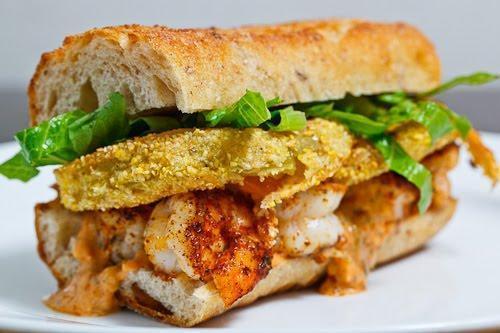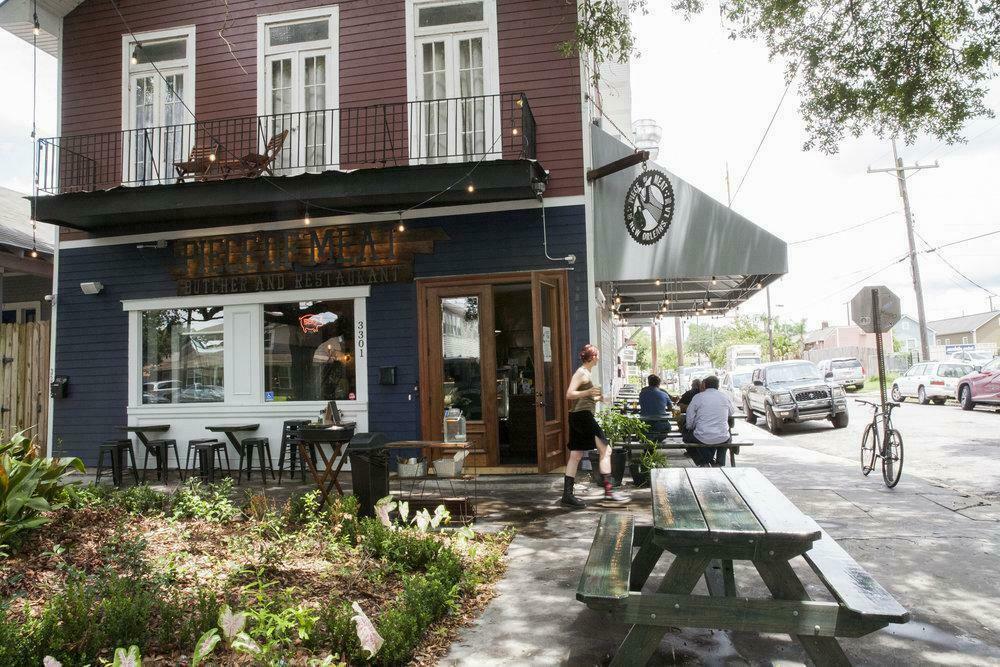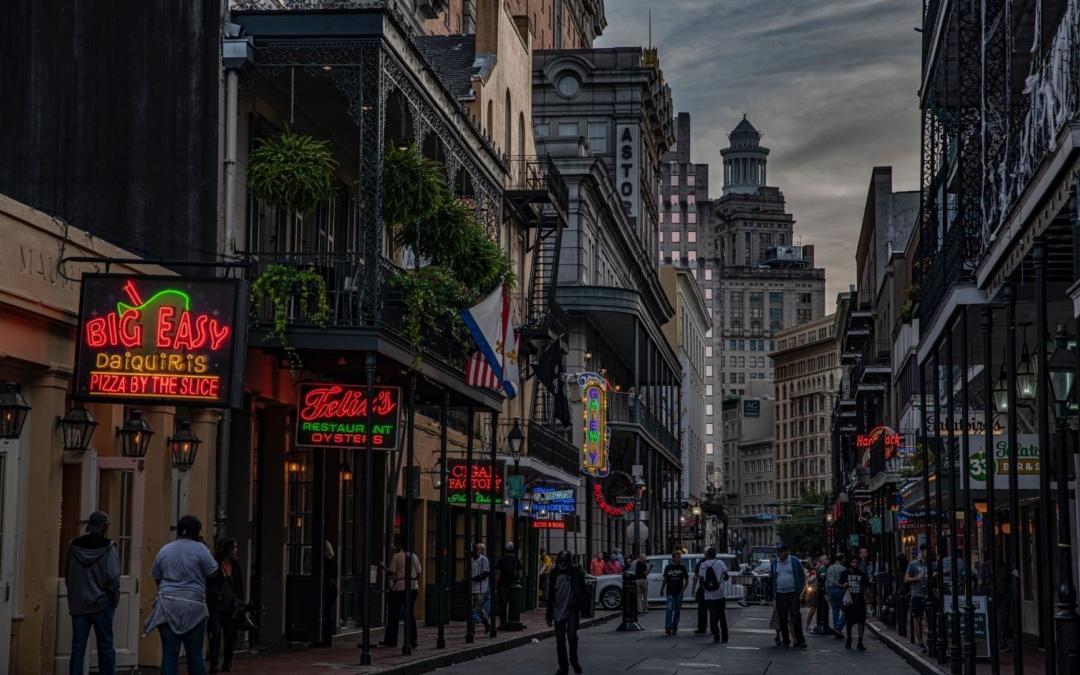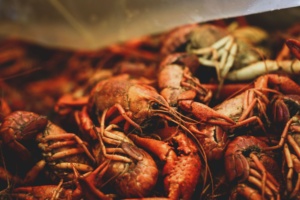New Orleans is one of America’s great cities. The city is one of the most unique in the country combining Southern culture, French colonial aesthetics, and African-American energy to make a city that’s distinct in its way of life, culture, and food landscape.
The city of New Orleans started its European history with French fur traders in the 1600s. The territory was “New France” and it spanned from Quebec City in the north to Newfoundland in the east and all the way down the Mississippi and Ohio valley to Louisiana in the south. The only thing bordering it were the American colonies in the eastern U.S and the prairies in the west. Louisiana is named after the French king Louis XIV and by 1803 it was purchased by the Americans. Even by the early 19th century, the city was a major melting pot of people and New Orleans is a major port city also contributed to its diverse mix of residents and visitors.
I have a long history with New Orleans and have traveled there both for work and for pleasure many times. Pleasure is a lot more fun. And eating is a favorite pastime there. New Orleans continues to be a hive of diversity, history, and fun, and it is one of the biggest food cities in the country. So while you’re in the big easy, check out some of these amazing places to eat iconic New Orleans food.
Johnny’s Po’Boys
The Po’Boy is a sandwich that is synonymous with classic New Orleans cuisine. The sandwich is the invention of the working class and the genius of southern cuisine. Inspired by the food of the land and the people who established the city long ago, the Po’Boy is as New Orleans as a sandwich can get. Po’Boys were invented to feed striking streetcar workers in 1929 providing the unpaid, striking workers something to eat on the picket line (hence, the name.) The sandwich is typically filled on crusty French bread and includes beef and fried seafood, usually shrimp then topped with lettuce, pickles, tomatoes, mayonnaise, and sometimes onions.
Johnny’s Po’Boys has been a Po’Boy institution in the French Quarter since the 50s and has always been a family-owned destination. The place is little more than a takeout counter so it’s a great place to stop by if you’re looking for a taste of history and you’re on the go. On top of the Po’Boy, they also serve other New Orleans classics like gumbo and jambalaya.

Head to Johnny Po’ Boys for a great sandwich.
Barrow’s Catfish
Catfish has always been a popular choice of fish meat in the south and Barrow’s Catfish is a legendary place with some of the best fried catfish in the state. The story of the restaurant starts in the 1940s when William “cap” Barrow and his wife May founded the original restaurant “Barrow’s Shady Inn”. Serving fried catfish plates out the backdoor, the Inn became popular mostly for its catfish and since then they opened a full-fledged restaurant complete with a bar and a jukebox playing the hits.
Barrow’s Shady Inn remained until 2005 when Hurricane Katrina struck and they had to move locations. Now the Barrow’s opened Barrow’s Catfish using the same great recipes the original Barrow’s had complete with a new and improved dining area filled with memorabilia and delicious New Orleanian dishes like gumbo. Po’boys, and of course, flaky and delicious fried catfish.
Commander’s Palace
When talking about the history of the New Orleans culinary scene, few places have the same backdrop as Commander’s Palace. Nestled in a tree-lined street in the Garden District, Commander’s Palace is a place of greatness. It’s been a fine dining establishment since 1880 making it one of the oldest restaurants in the city and has seen the likes of famous chefs from Paul Prudhomme and Emeril Lagasse come through its doors.
The restaurant is award-winning, showing off a glimpse into New Orleans’s cooking history with Haute-Southern fare that has won them seven James Beard awards. The iconic Victorian mansion is hard to miss and whether you’re looking for a romantic dinner for two or celebrating something with a large crowd, the atmosphere here is energetic and the food is unbelievably tasty.
Piece Of Meat
Located in Mid City, this restaurant gives Southern barbecue a run for its money. As the name would suggest, meat is what’s on the menu here but it’s more than just a place where you can load up on savory meats delicacies, it’s also a place that pays tribute to the craft. Piece Of Meat is also a butcher shop where the produce is butchered on-site and comes from local and sustainably sourced farms. It’s old-school butchery with new school ideas and it comes together to provide something amazing. Steaks, brisket, ribs, and charcuterie are in abundance here and it’s all cooked to perfection.

For great southern barbeque, Piece of Meat is where you should go.
Addis Nola
As a testament to the ever-growing and far-reaching diversity of the city, Addis Nola brings a little taste of Africa to the big city. The small spot opened in 2019 but it is already making a huge name for itself for those in the city looking to explore something new. Ethiopian cuisine is slowly making its way into American cuisine and Addis Nola is the place to go in New Orleans if you’re looking to explore and try something new. Chef Samuel Shiferaw offers a wide variety of stews, and stir fry that is amazing, filling, and vegetarian-friendly. Heaping piles of red lentils, chickpeas, cabbage, and carrots pair excellently with freshly baked injera (Ethiopian flatbread).
Café du Monde
If there is any restaurant in the city that has seen it all it is Café du Monde. The location of the café in the French Quarter has its origins even before the area was settled. The area of the nearby market was a popular place for Choctaw Natives to trade their wares. When the French settled the area they established a market here and the French Quarter grew. By 1862 Café du Monde opened upright in the middle of the action.
Café du Monde is itself a testament to the spirit of the city. Nothing can stop it. The restaurant is open 24 hours a day, seven days a week, and only closes for Christmas and the occasional hurricane. The restaurant has appeared in numerous novels and books, TV shows like The Simpsons, and Tremé, and movies like Now You See Me, and Chef.
But what sets it apart from any café in the city? When the French settled the area they brought with them coffee and during the Civil War coffee blended with chicory became a popular product as it provided a chocolatey-like flavor and allowed to spread the supply of coffee beans a little further under the short supply of the bean. Café du Monde continued to sell this and it became a hit. Furthermore, after the Acadiens were forcefully relocated many ended up in Louisiana (and became Cajuns). They brought with them the French tradition of the Beignet which is arguably the most menu item at Café du Monde. The square-shaped piece of fried dough is similar to a doughnut but does not have a hole in the middle and is served covered in a thick layer of powdered sugar.
Café du Monde’s menu is a monument in simplicity. It’s the living testament to the saying “if it’s not broken don’t fix it”. The menu has barely changed in over 100 years offering coffee black or “au lait”, white or chocolate milk, orange juice, and of course their legendary beignets.
Mother’s Restaurant
Mother’s Restaurant is another place that’s so quintessentially New Orleans you wouldn’t even know it. The place has been open since 1938 and when they say “they don’t make them like they used to” that applies to Mother’s Restaurant. Mother’s essentially founded itself on selling hearty and cheap meals to everyone from longshore, to lawyers, and marines. Located between the waterfront and the courthouse, people looking for a Po’Boy on the go or a filling of red beans and rice would stop by Mother’s. In fact, legendary New Orleans jazz musician Louis Armstrong was such a fan of red beans and rice that he used to sign off his letters “red beans and ricely yours”.
Even though Mother’s Restaurant has aged, it never forgot its working-class origins and still serves affordable and fresh food that locals love like jambalaya, gumbo, and of course, red beans and rice and it’s all made the same way it was back in the 40s.

Nothing fancy, but Mothers is what I call “Gooood eatin….”
Dooky Chase
Started by the infamous Leah Chase, the matriarch of Creole cuisine, Dooky Chase is a place that fills the stomach as much as it fills your soul. In 1946 Case married jazz trumpeter Edgar “Dooky” Chase II, whose parents owned a small shop selling lottery tickets and po’boy sandwiches in Treme. By the 50s, Chase was working in the restaurant with her husband and over time changed it to a sit-down establishment, changing the menu to reflect her Creole origins and serving people who would have otherwise been barred from dining in “whites-only” establishments. As such, Dooky Chase became a hot spot for civil rights leaders since it was one of the few places African-Americans leaders could meet and discuss strategies. Chase would soon find herself serving people like Martin Luther King Jr, the Freedom Rider, and A.P Tureaud.
After Katrina, her restaurant was flooded but soon after reopened to numerous accolades including a James Beard Award, and a visit from Presidents Bush and Obama. Dooky Chase served people from James Baldwin, Hank Aaron, and Ray Charles (who mentions the restaurant in his song Early Morning Blues).
Today Dooky Chase still goes strong with her Paris-trained grandson Edgar Chase taking the helm in the kitchen. Chase’s fried chicken, gumbo z’herbes, and shrimp Clemenceau are still being served just like Leah Chase used to make.
Jacques-Imos
For nearly 20 years this restaurant is also a sort of “anti” restaurant. Noticeable by its large sign outside saying “warm beer, lousy food, and poor service” you might be pressed to wonder why you’d ever want to go inside. Well, just don’t listen to the sign and do it anyways. There is a reason this place has been around for two decades and it’s because the food is anything but lousy. Serving some of the best blackened redfish and other Creole classics like boudin sausage, Jacques-Imos is a staple in the community for a reason that isn’t wisecracking jokes.
Central Grocery
The Italian-American community of New Orleans is a long history. With the country bringing in many immigrants to work manual labor in the early 20th century, affordable, filling food was a must. Enter Central Grocery. Located in the French Quarter down the street from Café du Monde is the Italian grocery store-meets-restaurant of Central Grocery. Started in 1906 by Salvatore Lupo, he sold cold cuts, olives, cheese, and vegetables, primarily to Italian farm laborers. Noticing that eating all of these things separately proved to be unwieldy, he put it on two slices of Sicilian sesame seed bread and called it the Muffuletta. The salty-meaty texture of the meat and cheese, topped with the brininess of the olives and pickled veggies soak into the bread to make one delicious sandwich that is more New Orleans than Italian.
Our Final Word
The food scene in New Orleans is probably one of the most diverse and eclectic in the country. It’s influenced by so many things and so many people all of whom have left their mark on the city and its food landscape. Even though a dish might have come from a distinct culture in the end, it eventually becomes New Orleanian.
1 Comment
Submit a Comment
Related Posts
Sun, Sand, and Adventure: Top 5 Things to Experience on Fort Myers Beach
Fort Myers Beach offers a paradise for sun-seekers and adventure enthusiasts alike. Dive into crystal-clear waters teeming with vibrant marine life, or soak up the sun on the pristine sandy shores. Embark on thrilling water sports, explore the enchanting Lovers Key State Park, or indulge in fresh seafood at waterfront restaurants.
Birding Paradise: Discovering the Ultimate Countries for Birdwatching Enthusiasts
Birding Paradise takes you on a captivating journey to the ultimate countries for birdwatching enthusiasts. From the lush rainforests of Costa Rica to the vast plains of Kenya, this article unveils the most breathtaking birding destinations on Earth. Packed with stunning photographs and expert tips, it is a must-have guide for every avid birder.
Kaktovik: A Hidden Gem for Polar Bear Enthusiasts
Nestled on the edge of the Arctic Ocean, Kaktovik is a hidden gem for polar bear enthusiasts. This remote Alaskan village offers a unique opportunity to witness these majestic creatures up close. From guided tours to breathtaking wildlife encounters, Kaktovik promises an unforgettable adventure for those seeking an intimate connection with nature’s most iconic symbol of the frozen wilderness.










Hi guys. Trust you doing well?
I wanna recommend you blog cox you guys are really doing a great job. Piece of Meat is at a best location for business and I believe their BBQ will definitely taste great. I appreciate your good work. Keep it up.
Cheer